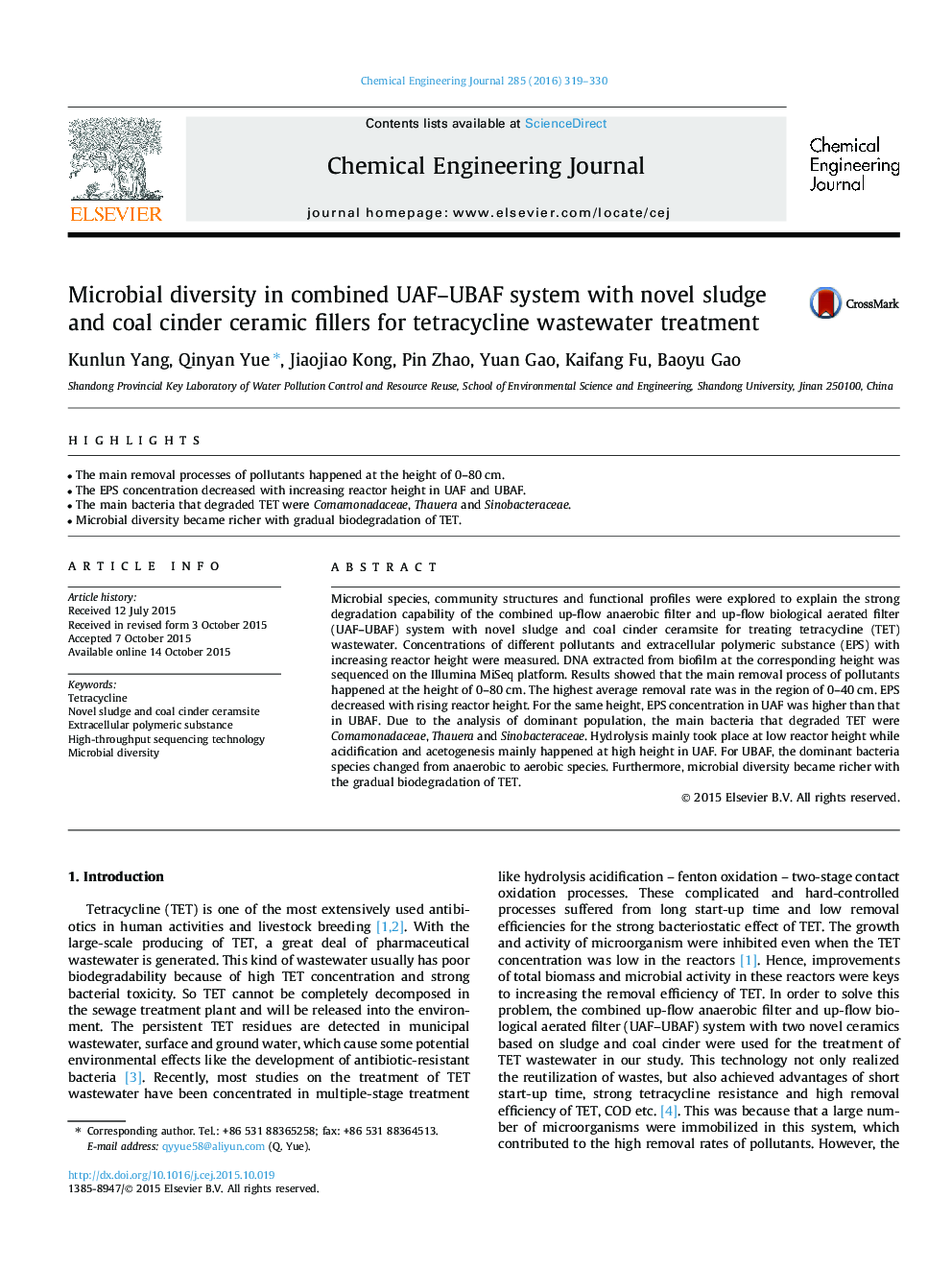| Article ID | Journal | Published Year | Pages | File Type |
|---|---|---|---|---|
| 6583130 | Chemical Engineering Journal | 2016 | 12 Pages |
Abstract
Microbial species, community structures and functional profiles were explored to explain the strong degradation capability of the combined up-flow anaerobic filter and up-flow biological aerated filter (UAF-UBAF) system with novel sludge and coal cinder ceramsite for treating tetracycline (TET) wastewater. Concentrations of different pollutants and extracellular polymeric substance (EPS) with increasing reactor height were measured. DNA extracted from biofilm at the corresponding height was sequenced on the Illumina MiSeq platform. Results showed that the main removal process of pollutants happened at the height of 0-80Â cm. The highest average removal rate was in the region of 0-40Â cm. EPS decreased with rising reactor height. For the same height, EPS concentration in UAF was higher than that in UBAF. Due to the analysis of dominant population, the main bacteria that degraded TET were Comamonadaceae, Thauera and Sinobacteraceae. Hydrolysis mainly took place at low reactor height while acidification and acetogenesis mainly happened at high height in UAF. For UBAF, the dominant bacteria species changed from anaerobic to aerobic species. Furthermore, microbial diversity became richer with the gradual biodegradation of TET.
Related Topics
Physical Sciences and Engineering
Chemical Engineering
Chemical Engineering (General)
Authors
Kunlun Yang, Qinyan Yue, Jiaojiao Kong, Pin Zhao, Yuan Gao, Kaifang Fu, Baoyu Gao,
